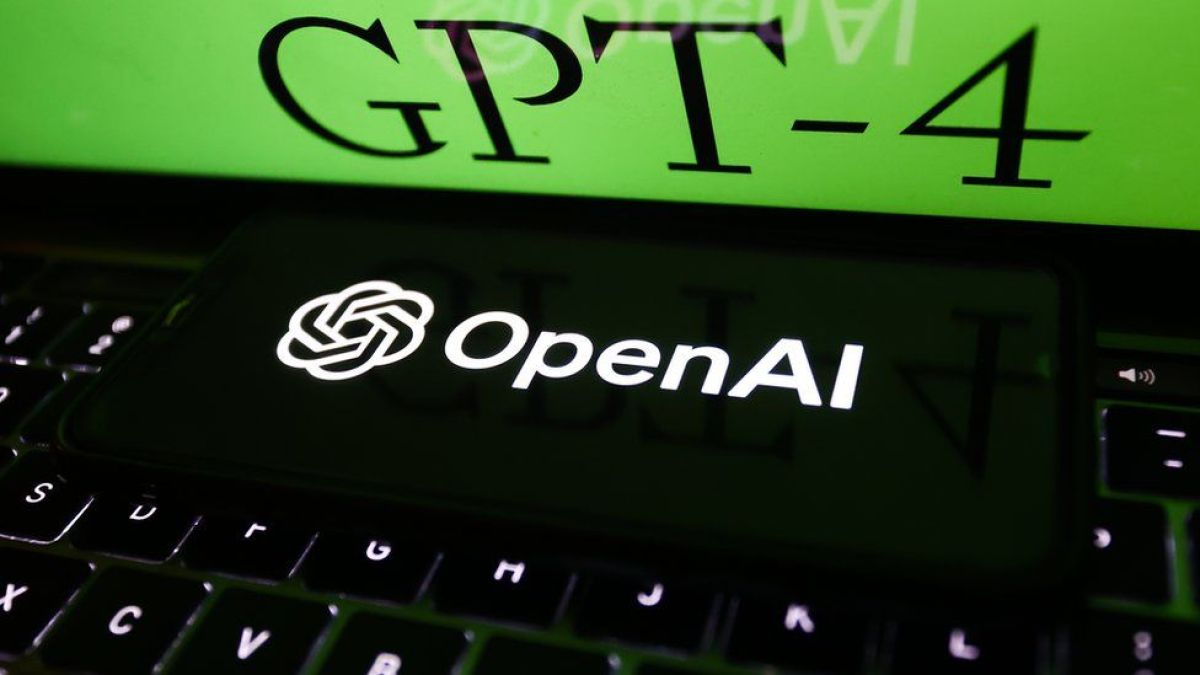Start-up OpenAI on Tuesday launched a powerful AI model known as ChatGPT-4.
At the launch event, which was intended for programmers and users of its application interface (API), OpenAI said its latest technology is "multimedia," meaning images as well as text messages can trigger its algorithms to create new content.
While the text input feature will be available to ChatGPT Plus subscribers and app developers, the image input feature will remain limited to research and training teams for now.
"Open AI" said that "GPT-4" represents a significant improvement over the previous version known as "GPT-3.5" and gave an example of the bar exam required of graduates of law schools in the United States before professional practice. 10% higher vs older model rating.
And while the two versions can appear similar in informal conversations, the differences emerge when it comes to complex conversations, as the company says GPT-4 is more reliable and creative, and is able to handle more precise instructions.
GPT-4 can understand the components of images and create appropriate content for them (Open AI)
Working examples of GPT-4 from OpenAI's demo
A demo on the YouTube channel by Greg Brockman, Head of OpenAI, showed that you can take a picture of a hand-drawn design for a simple website and build a real website based on it.
The demonstration also showed that GPT-4 Chat can also help individuals calculate their taxes.
The company said that "GPT-4" is 82% less likely to show unauthorized content compared to its predecessor, as inaccurate responses known as "hallucinations" in previous versions posed a challenge to many artificial intelligence programs.
Island Experiment with GPT-4
In Al-Jazeera, we compared "GPT-4 Chat" and the modified "GPT-3.5 Chat" in 3 practical experiments using the Arabic language, which included "research", "interpretation" and "programming", and the results were as follows.
Find Chekhov
In our previous experiences with "Chat GPT-3.5", we were disappointed in the field of research and giving the correct information in the Arabic language. That is why we asked about the two versions about the Russian writer Anton Chekhov, and this was the response of the two versions.
GPT-4's response
GPT-3.5 response
Interpretation of "Khafi Haneen"
OpenAI says that the fourth version of GPT is able to handle complex interpretations better than the third version, so we asked it about the proverb "go back with nostalgia."
And these were the answers.
GPT-4's response
GPT-3.5 response
Calculation program in Python language
In the last test, we asked the two copies to write a program sentence to show the arithmetic result of adding 10 even numbers and dividing them by two.
The surprise was that the two versions interpreted the question differently, but they wrote the code sentence correctly and showed a correct result according to each version's understanding, but the "GPT-4" version was better at understanding the question correctly in Arabic.
GPT-4's response
This is the result of executing the program in red, and it is correct. The result of adding (2,4,6,8,10,12,14,16,18,20) is 110, and the result of dividing it by 2 is 55.
GPT-3.5 response
This version could not differentiate between what is required, which is "collecting 10 even numbers", and between adding even numbers from 0-10, which is what it built the program on.
This is the result of executing the code sentence written by this version, and it is programmatically correct and as a result, but it is not what is required in the question. The result of adding the even numbers in the first 10 numbers, which are (2,4,6,8,10) is 30, and when dividing it by 2, the result will be 15, which is the number which appears in the result marked in red but is not required.
GBT is entering middle school
We can say that the fourth version of "GBT Chat" is definitely better than the previous version, and it is surprising and frightening at the same time that this development took place in less than 4 months after the launch of the previous version.
It looks like a student in the primary stage who was able to climb to the intermediate stage in only 4 months, so where will this student be at the end of the year if he continues at this accelerated pace of cognitive development?!

